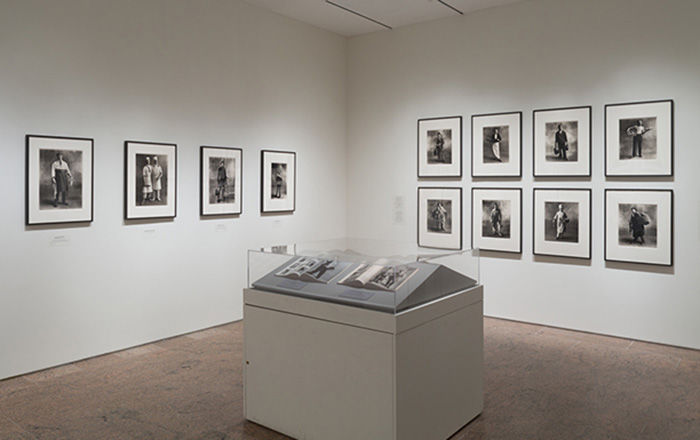[Portrait and Description of Habitual Drunkard: James Arnold, Lincolnshire, Boston Police District, UK]
Not on view
Divorced from its attached file, this image of forty-three-year-old fisherman James Arnold—attired in a guernsey jumper and crowned by a mariner’s cap set at a jaunty angle—might be mistaken for a casual, occupational portrait. Despite the sitter’s conventional pose and slightly bemused expression, the photograph in question is in fact a forerunner of the modern mug shot. Once affixed to the descriptive record (which police distributed to local publicans and off-license shops) the photo identified Arnold as a "habitual drunk" and barred him from buying or consuming alcohol for the next three years; infractions led to small fines for the imbiber and heavier fines for the provider.
The question of who to blacklist under the so-called "Habitual Drunkards Licensing Act," which went into effect on New Year’s Day in 1903, was immediately the subject of public debate, since "hard drinkers" had never before been subject to legislation. Even so, photographic circles wryly welcomed the law, seeing in it a potential for a new specialty of "habitual drunkard portraiture." Aside from such humor, the British Journal of Photography also recognized that the provisions of the statute could not be enforced without the "potent help of the camera." Indeed, informal photographs such as that of James Arnold are rare; beginning in the late nineteenth century, criminal portraits were subject to standardized variables of expression, distance, and lighting that led to the two-part mug shot that we know today.
